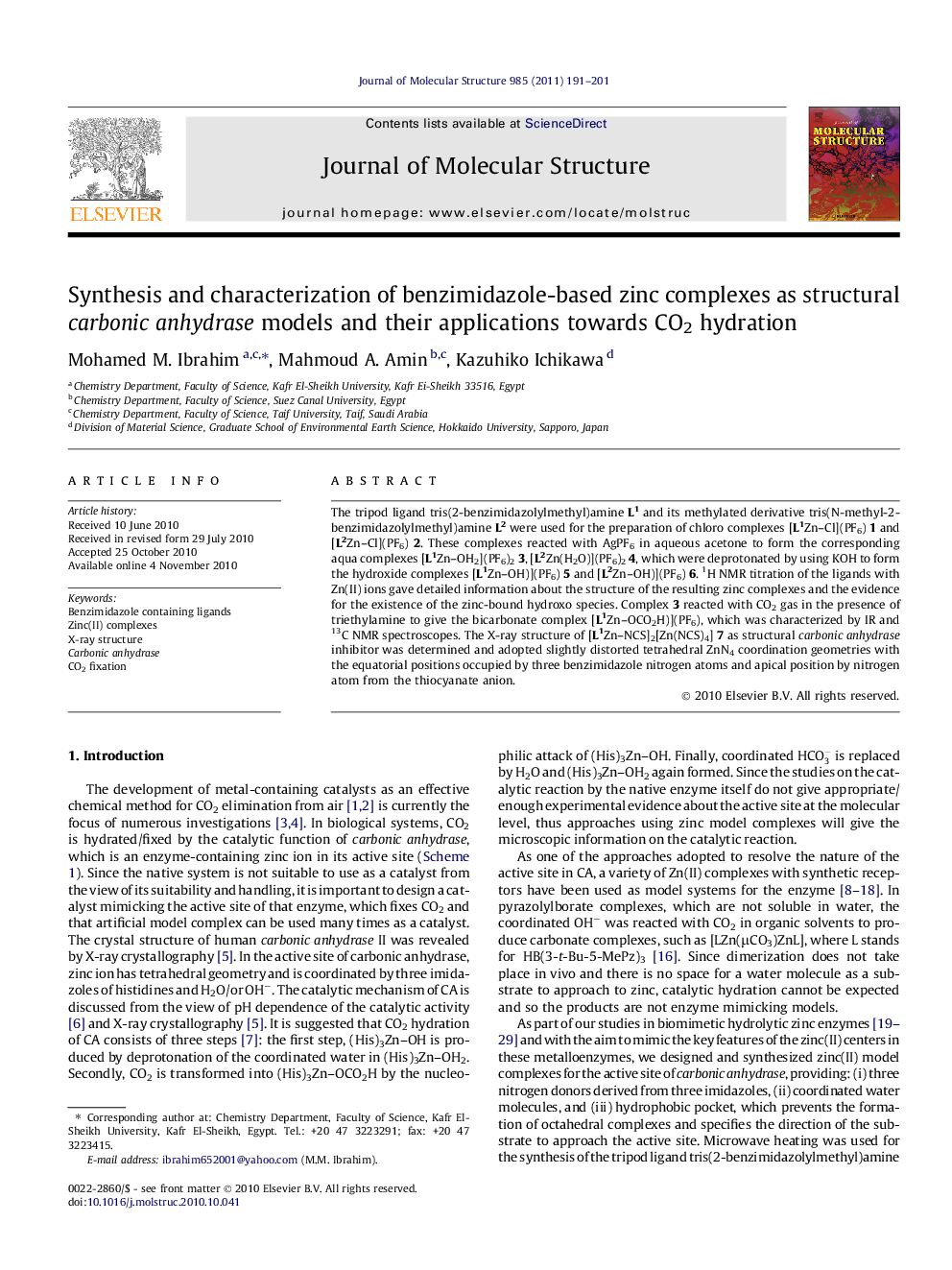| Article ID | Journal | Published Year | Pages | File Type |
|---|---|---|---|---|
| 1409698 | Journal of Molecular Structure | 2011 | 11 Pages |
The tripod ligand tris(2-benzimidazolylmethyl)amine L1 and its methylated derivative tris(N-methyl-2-benzimidazolylmethyl)amine L2 were used for the preparation of chloro complexes [L1Zn–Cl](PF6) 1 and [L2Zn–Cl](PF6) 2. These complexes reacted with AgPF6 in aqueous acetone to form the corresponding aqua complexes [L1Zn–OH2](PF6)23, [L2Zn(H2O)](PF6)24, which were deprotonated by using KOH to form the hydroxide complexes [L1Zn–OH)](PF6) 5 and [L2Zn–OH)](PF6) 6. 1H NMR titration of the ligands with Zn(II) ions gave detailed information about the structure of the resulting zinc complexes and the evidence for the existence of the zinc-bound hydroxo species. Complex 3 reacted with CO2 gas in the presence of triethylamine to give the bicarbonate complex [L1Zn–OCO2H)](PF6), which was characterized by IR and 13C NMR spectroscopes. The X-ray structure of [L1Zn–NCS]2[Zn(NCS)4] 7 as structural carbonic anhydrase inhibitor was determined and adopted slightly distorted tetrahedral ZnN4 coordination geometries with the equatorial positions occupied by three benzimidazole nitrogen atoms and apical position by nitrogen atom from the thiocyanate anion.
